Genealogy
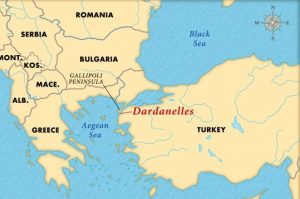
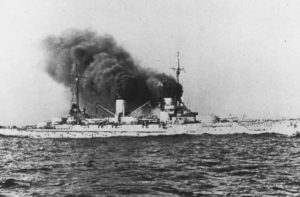 The Dardanelles is a narrow strait running between the Black Sea in the east and the Mediterranean Sea in the west. In World War I it was a much contested area right from the start. It was the subject of a naval attack, spearheaded by Winston Churchill, who was at that time Britain’s young first lord of the Admiralty. On March 18, 1915, six English and four French battleships headed toward the strait. When they reached the area, Turkish mines blasted five of the ships, sinking three of them and forcing the Allied navy to draw back until land troops could be coordinated to begin an invasion of the Gallipoli peninsula. With troops from the Ottoman Empire and Germany mounting a spirited defense of the peninsula, however, the Gallipoli offensive turned into a significant setback for the Allies, with 205,000 casualties among British Empire troops and nearly 50,000 among the French.
The Dardanelles is a narrow strait running between the Black Sea in the east and the Mediterranean Sea in the west. In World War I it was a much contested area right from the start. It was the subject of a naval attack, spearheaded by Winston Churchill, who was at that time Britain’s young first lord of the Admiralty. On March 18, 1915, six English and four French battleships headed toward the strait. When they reached the area, Turkish mines blasted five of the ships, sinking three of them and forcing the Allied navy to draw back until land troops could be coordinated to begin an invasion of the Gallipoli peninsula. With troops from the Ottoman Empire and Germany mounting a spirited defense of the peninsula, however, the Gallipoli offensive turned into a significant setback for the Allies, with 205,000 casualties among British Empire troops and nearly 50,000 among the French.
When the Allies got involved, the latter offensives in Mesopotamia and Palestine saw more success. By September 1917, the crucial cities of Jerusalem and Baghdad were both in British hands. As the war stretched into the following year, these defeats and an Arab revolt had combined to destroy the Ottoman economy and devastate its land. Some 6 million people were dead and millions more starving. In early October 1918, unable to bank on a German victory any longer, the Turkish government in Constantinople decided to cut its losses and approached the Allies about brokering a peace deal. On October 30, 1918, British and Turkish representatives signed the Treaty of Mudros, which ended Ottoman participation in World War I. According to the terms of the treaty, Turkey had to demobilize its army, release all prisoners of war, and evacuate its Arab provinces, the majority of which were already under Allied control…and open the Dardanelles and Bosporus to Allied warships.
This last condition was fulfilled on November 12, 1918, the day after the armistice, when a squadron of British warships steamed through the Dardanelles, past the ruins of the ancient city of Troy, toward 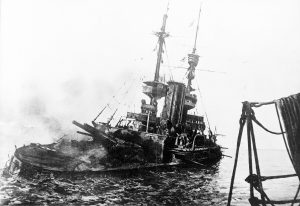
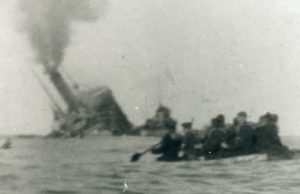 Constantinople. By the post-war terms worked out by the Allies in the Treaty of Sevres in 1920, the waterways that were formerly under Ottoman rule…including the Dardanelles, the Sea of Marmora and the Bosporus…were now placed under international control, with the designation that their “navigation…shall in future be open, both in peace and war, to every vessel of commerce or of war and to military and commercial aircraft, without distinction of flag.”
Constantinople. By the post-war terms worked out by the Allies in the Treaty of Sevres in 1920, the waterways that were formerly under Ottoman rule…including the Dardanelles, the Sea of Marmora and the Bosporus…were now placed under international control, with the designation that their “navigation…shall in future be open, both in peace and war, to every vessel of commerce or of war and to military and commercial aircraft, without distinction of flag.”
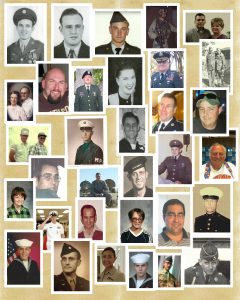 In a time when our nation is in such turmoil, I find myself appreciating our veterans even more than I did before. As a proud daughter of a World War II veteran, I always had a feeling of awe when it came to the members of our military. I never thought of a soldier without associating it with a hero, because that is what they are…each and every one of them. It takes the heart of a hero to set aside their own life, time with family, and their safety to protect the rights and lives of others…people they don’t know…who aren’t in their own country.
In a time when our nation is in such turmoil, I find myself appreciating our veterans even more than I did before. As a proud daughter of a World War II veteran, I always had a feeling of awe when it came to the members of our military. I never thought of a soldier without associating it with a hero, because that is what they are…each and every one of them. It takes the heart of a hero to set aside their own life, time with family, and their safety to protect the rights and lives of others…people they don’t know…who aren’t in their own country.
Soldiers are a special kind of hero. Like our first responders, they run into danger while others are running away, but a soldier does that in countries that aren’t their own. They have no stake in that country, but they know that without their help, the people of that nation are going to continue to live oppressed. The soldier fights for those who cannot fight for themselves. Evil dictators cringe when the soldiers are sent in, because there is a good possibility that the dictator’s days are numbered. War is never an easy journey for the soldier, but he or she knows that they are needed. They know that for every enemy death…a life is saved, and while that may be putting things a little bit simplistically, in a very real sense, it is true. In a war, the enemy must be beaten, in order to win the war, and thereby save the innocent.
Going off to war changes a person, and so does training to go to war. The minute a soldier joins up, there is a possibility of going to war, and the soldier has to face that fact. That’s where the heart of the hero kicks in. Deep down inside, the soldier has knows that what they are doing is important…it matters. Theirs is often a thankless job, and is sometimes treated with great disrespect, but when they are needed, they answer the call, nevertheless. It is our soldiers and their strength, that usually keeps our homeland free from attack. It’s not that we have never had attacks on our soil, but a strong, at the ready military force, makes our enemies think twice about trying to attack us here…and for that, I thank our military men and women. Our nation is very blessed to have our soldiers. To our active duty soldiers and our veterans of all wars, Happy Veterans Day!!
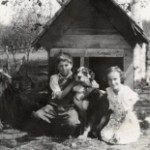
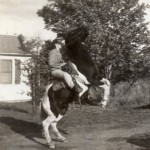 My Aunt Ruth Wolfe was raised on a farm, around horses, and she loved them, as well as most other animals. She really thrived on the country life. She worked hard, alongside her mom and siblings, especially during World War II, when her brother, my dad, Allen Spencer was serving in the Army Air Forces. She helped at the farm and also as a welder at the shipyards…one of the women known as riveters. Later in her life, when she was married, she and my Uncle Jim Wolfe lived in the country outside Casper, Wyoming. They gardened, canned, and raised farm animals. Aunt Ruth was one tough lady. She could do just about anything she set her mind to. From that hard work of farming, to canning, to haying, to playing any instrument, to painting, my Aunt Ruth was simply a multi-talented woman.
My Aunt Ruth Wolfe was raised on a farm, around horses, and she loved them, as well as most other animals. She really thrived on the country life. She worked hard, alongside her mom and siblings, especially during World War II, when her brother, my dad, Allen Spencer was serving in the Army Air Forces. She helped at the farm and also as a welder at the shipyards…one of the women known as riveters. Later in her life, when she was married, she and my Uncle Jim Wolfe lived in the country outside Casper, Wyoming. They gardened, canned, and raised farm animals. Aunt Ruth was one tough lady. She could do just about anything she set her mind to. From that hard work of farming, to canning, to haying, to playing any instrument, to painting, my Aunt Ruth was simply a multi-talented woman.
I think one of the strangest moves Aunt Ruth and Uncle Jim made was the one to Vallejo, California. I couldn’t quite figure out why a person who loved the country so much, would move to a city. Vallejo is a suburb of San Francisco, California, and very different from Casper, Wyoming or Holyoke, Minnesota. I suppose they decided that they wanted a change of pace, and I can understand that, because my family and I lived in the country for a number of years before we moved into town in Casper. For us, the city life was more…us, at least the small city life. I don’t think I would want to live in a big city like New York or San Francisco. Still, I can understand why my aunt and uncle might be drawn to the big city life, and the warmer California weather.
After a time in California, the quiet country life again drew them from the big city to the mountains of Washington state. I can’t say that the move to the mountains surprised me much, because it seems like country life was like the blood that ran through my aunt and uncle’s veins. It was a part of who they were, as 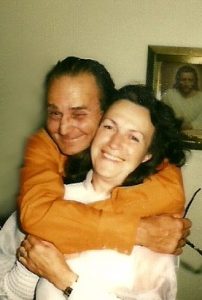
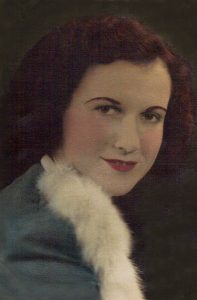 much as their DNA was who they were. Once they settled in eastern Washington, they never moved again. They bought the top of a mountain, and built three cabins there…one for them, one for their daughter, Shirley and her husband, Shorty Cameron; and one for their son Terry and his family. For Aunt Ruth and Uncle Jim, this would be their forever home. Having been on their mountain top, I can say that I understand why they thought it was so beautiful, but in the years since I moved back to town, I know that I would not want to live permanently in the country, or on a mountain top again. Nevertheless, that was their favorite place to be. Today would have been my Aunt Ruth’s 92nd birthday. It’s hard to believe she has been gone 26 years now. Happy birthday in Heaven Aunt Ruth. We love and miss you so very much, and can’t wait to see you again.
much as their DNA was who they were. Once they settled in eastern Washington, they never moved again. They bought the top of a mountain, and built three cabins there…one for them, one for their daughter, Shirley and her husband, Shorty Cameron; and one for their son Terry and his family. For Aunt Ruth and Uncle Jim, this would be their forever home. Having been on their mountain top, I can say that I understand why they thought it was so beautiful, but in the years since I moved back to town, I know that I would not want to live permanently in the country, or on a mountain top again. Nevertheless, that was their favorite place to be. Today would have been my Aunt Ruth’s 92nd birthday. It’s hard to believe she has been gone 26 years now. Happy birthday in Heaven Aunt Ruth. We love and miss you so very much, and can’t wait to see you again.
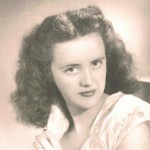 As my Aunt Evelyn Hushman’s birthday approaches, I wanted to look back to the years when she was growing up. She was the oldest of nine children, and so in many ways she became like a second mom to the younger kids…but, not exactly, in that my grandmother, Hattie Byer was a stay at home wife and mom all the years of her marriage. That was pretty much how it was in those days. I don’t know if shyness or being outgoing is something that a person is born with or not, but as the oldest child, with eight siblings, I seriously doubt if my Aunt Evelyn had the opportunity to be shy. And whatever the case on heredity might be, she certainly was not shy, but grew up to be a very outgoing person who had a wonderful circle of friends.
As my Aunt Evelyn Hushman’s birthday approaches, I wanted to look back to the years when she was growing up. She was the oldest of nine children, and so in many ways she became like a second mom to the younger kids…but, not exactly, in that my grandmother, Hattie Byer was a stay at home wife and mom all the years of her marriage. That was pretty much how it was in those days. I don’t know if shyness or being outgoing is something that a person is born with or not, but as the oldest child, with eight siblings, I seriously doubt if my Aunt Evelyn had the opportunity to be shy. And whatever the case on heredity might be, she certainly was not shy, but grew up to be a very outgoing person who had a wonderful circle of friends.
I think most of her family knows a lot about Aunt Evelyn as an adult, but I wanted to find out some things about her as a teenager, so I went looking on Ancestry and I was not disappointed. Ancestry has recently started putting the yearbooks from the schools on the site, and I found just what I was looking for there. As a senior, Aunt Evelyn was a part of the Junior Follies, which is a play put on by the senior class. The Follies at Natrona County High School began in 1925, and in the years that have followed, numerous student, alum, and community productions have graced the stage. The money made from the Follies was used to fund the prom. I never knew that my Aunt Evelyn was an actress…and, even if it was only for a short time, I  think it’s very cool, but not as cool as what I found next.
think it’s very cool, but not as cool as what I found next.
The second thing I found out about Aunt Evelyn…one that really doesn’t surprise me that much, because it is so very much in character for her, was that as a senior, she was a Big Sister. Now, I’m sure that you thought about her eight younger siblings, and thought, “Of course, she was! We knew that!” Her siblings are not the people I am talking about, however. In the late 1940s at Natrona County High School, there was a group of senior girls, all of whom were required to have a high three point grade average, and who possessed dependability and leadership skills. Being a part of a program like Big Brothers/Big Sisters, is something we have all heard about these days. It is a mentoring program. However, Big Sisters at Natrona County High School was a bit different than that. At the beginning of the school year, each of the Big Sisters were assigned three or four little sisters, who were sophomores. Basically the duties of a Big Sister were to give advise and help out in any way she can to make the transition from Junior High to High school a successful one for the little sisters. This aid might come 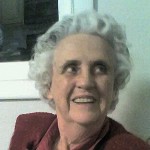 in the form of helping with Latin translation…or it could be help to find a date for the Co-Ed Ball, which was later named Football Ball. Many people who went by the Girls’ League room might have noticed Big and Little Sisters leaving notes on the bulletin board in the room…especially in the fall of the year. Of course, those notes were to ask or offer help with this or that, but many people wondered if the room was the Pony Express station, the post office, or the general exchange. They couldn’t have been more wrong, it was just a group of girls who were blessed enough to have a helper, or to be one. And, it makes me proud to know that my Aunt Evelyn was one of those amazing Big Sisters. Today would have been Aunt Evelyn’s 89th birthday. Happy birthday in Heaven, Aunt Evelyn. We love and miss you very much.
in the form of helping with Latin translation…or it could be help to find a date for the Co-Ed Ball, which was later named Football Ball. Many people who went by the Girls’ League room might have noticed Big and Little Sisters leaving notes on the bulletin board in the room…especially in the fall of the year. Of course, those notes were to ask or offer help with this or that, but many people wondered if the room was the Pony Express station, the post office, or the general exchange. They couldn’t have been more wrong, it was just a group of girls who were blessed enough to have a helper, or to be one. And, it makes me proud to know that my Aunt Evelyn was one of those amazing Big Sisters. Today would have been Aunt Evelyn’s 89th birthday. Happy birthday in Heaven, Aunt Evelyn. We love and miss you very much.
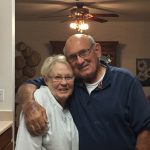 I originally met my husband’s uncle, Andrew “Butch” Schulenberg at a family reunion about 1980, but really began to feel close to him and Aunt Charlys after my father-in-law, Walt Schulenberg, Butch’s half brother, passed away in 2013. Since that time, my husband, Bob and I have gone to Forsyth to spend time with them and kept in touch on Facebook. In those five years, I can honestly say that he has become a favorite uncle to me. He is very sweet man, and his kind, thoughtful ways have endeared him to me more than he could possibly know. I am so blessed that he is a part of my life.
I originally met my husband’s uncle, Andrew “Butch” Schulenberg at a family reunion about 1980, but really began to feel close to him and Aunt Charlys after my father-in-law, Walt Schulenberg, Butch’s half brother, passed away in 2013. Since that time, my husband, Bob and I have gone to Forsyth to spend time with them and kept in touch on Facebook. In those five years, I can honestly say that he has become a favorite uncle to me. He is very sweet man, and his kind, thoughtful ways have endeared him to me more than he could possibly know. I am so blessed that he is a part of my life.
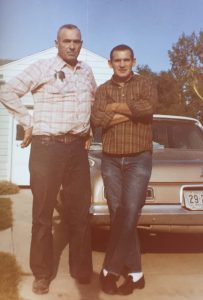 Uncle Butch is the youngest child of his dad, Andrew Schulenberg, who was the sheriff of Rosebud County, Montana from 1955 to 1972. Growing up as the son of the County Sheriff, you would expect that Butch would be an expert in guns, and you would be right, but not for the reason you might think. You see, Butch’s dad was known as the sheriff without a gun. Nevertheless, that didn’t stop Butch from becoming an expert marksman. Butch graduated from high school in Forsyth, Montana, and then attended Northern Montana College in Havre, Montana before joining the Army on September 13, 1963. Part of his time in the Army was spent stationed at Schofield Barracks, Hawaii, as a rifleman in Company A, 1st Battalion of the Division’s 35th Infantry. While there he took part in Exercise West Wind as a part of the assault team in a joint Army-Navy-Marine Corps amphibious operation on the Hawaiian Island of Molokai from April
Uncle Butch is the youngest child of his dad, Andrew Schulenberg, who was the sheriff of Rosebud County, Montana from 1955 to 1972. Growing up as the son of the County Sheriff, you would expect that Butch would be an expert in guns, and you would be right, but not for the reason you might think. You see, Butch’s dad was known as the sheriff without a gun. Nevertheless, that didn’t stop Butch from becoming an expert marksman. Butch graduated from high school in Forsyth, Montana, and then attended Northern Montana College in Havre, Montana before joining the Army on September 13, 1963. Part of his time in the Army was spent stationed at Schofield Barracks, Hawaii, as a rifleman in Company A, 1st Battalion of the Division’s 35th Infantry. While there he took part in Exercise West Wind as a part of the assault team in a joint Army-Navy-Marine Corps amphibious operation on the Hawaiian Island of Molokai from April 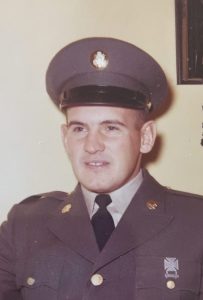 15, 1964 to April 24, 1964. During his time in the Army, Butch became an Expert (Rifle M-14) and Marksman (Rifle).
15, 1964 to April 24, 1964. During his time in the Army, Butch became an Expert (Rifle M-14) and Marksman (Rifle).
Butch had learned to respect the dangers of guns early in his life, a result of the fact that his dad lost his left leg as a result of a hunting accident at the tender age of 14. I don’t believe that Grandpa Andy Schulenberg was afraid of guns, else how could he possibly be the Sheriff of Rosebud County for so many years, but I do believe that he was well aware of what can happen with guns and that he made sure that his children knew that they were not a toy. Nevertheless, he didn’t teach his children to fear guns either. While Butch was an excellent marksman, he was also a great driver, and that caught the attention of his superior officer who chose him to be his driver for much of his time in the service. Butch received an honorable discharge on August 23, 1965. I am very proud of Uncle Butch’s service to his country, and his abilities. Today is Uncle Butch’s 77th birthday. Happy birthday Uncle Butch!! Have a great day!! We love you!!
 My husband’s uncle, Eddie Hein has always been a soft-spoken man, who had a big impact on the lives of those around him. I remember the first time I met Eddie. I liked him and his wife, Pearl very much. They were kind and welcoming, and to this day, we love to go to visit them in Forsyth, Montana, although we don’t get to go nearly as often as we used to. Before his retirement, Eddie worked long, hard hours at the Peabody coal mine in Colstrip, Montana. It was shift work, and it was hard on the body, but Eddie made a good living and supported his family well. The long hours always seemed twice as long as they were…especially at the end of a long week of them.
My husband’s uncle, Eddie Hein has always been a soft-spoken man, who had a big impact on the lives of those around him. I remember the first time I met Eddie. I liked him and his wife, Pearl very much. They were kind and welcoming, and to this day, we love to go to visit them in Forsyth, Montana, although we don’t get to go nearly as often as we used to. Before his retirement, Eddie worked long, hard hours at the Peabody coal mine in Colstrip, Montana. It was shift work, and it was hard on the body, but Eddie made a good living and supported his family well. The long hours always seemed twice as long as they were…especially at the end of a long week of them.
Coal mining was Eddie’s occupation, but it was not his life…not his heart. His heart belonged to his family. Eddie remodeled their home largely by himself, and did a beautiful job. Eddie worked hard, alongside Pearl, of course, weeding their garden, and growing their vegetables, and then canning the vegetables for use all year long. It was a project they did together, especially after Pearl went to work too. Eddie and Pearl were always there to help their friends and neighbors too. People only had to call, and they would do whatever was needed. I suppose that is just the way it is in a small town, but more likely it is just they way they are. Eddie and Pearl are very helpful people, just ask anyone.
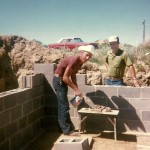
Eddie has always loved tractors. He was always working on one or two, and there were always tractors in their back yard. He used them to help friends with their haying, or digging something for someone when needed. I’m sure he used them in their own garden too, because you can’t really have a successful garden if you don’t plow it and such. My husband, Bob remembers those tractors well, but then I guess he would. It’s kind of a guy thing, and being a mechanic, just like his Uncle Eddie, working on tractors would have a draw for him too. I’m sure those tractors gave them lots to talk about, and I know that they both enjoyed those visits very much. Today is Eddie’s 74th birthday. Happy birthday Eddie!! Have a great day!! We love you!!
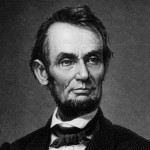 In the early years of politics in the United States, the political parties had different names than they do these days. Of course, with the additional parties we have now, it is an ever changing political scene, with the lesser parties visible, but unlikely to win the office of President of the United States…at least for now. The First Party System of the United States featured the Federalist Party and the Democratic-Republican Party (also called “Democratic-Republican” or “Jeffersonian Republican”), these were in place from 1792 to 1824. The Whig Party, led by Henry Clay, that grew from the National Republican Party, and the Democratic Party, led by Andrew Jackson, were in play from 1828 to 1854. The Third Party System stretched from 1854 to the mid-1890s, and was characterized by the emergence of the anti-slavery Republican Party (nicknamed “GOP”), which adopted many of the economic policies of the Whigs, such as national banks, railroads, high tariffs, homesteads and aid to land grant colleges. It was into this time-frame that President Abraham Lincoln entered office.
In the early years of politics in the United States, the political parties had different names than they do these days. Of course, with the additional parties we have now, it is an ever changing political scene, with the lesser parties visible, but unlikely to win the office of President of the United States…at least for now. The First Party System of the United States featured the Federalist Party and the Democratic-Republican Party (also called “Democratic-Republican” or “Jeffersonian Republican”), these were in place from 1792 to 1824. The Whig Party, led by Henry Clay, that grew from the National Republican Party, and the Democratic Party, led by Andrew Jackson, were in play from 1828 to 1854. The Third Party System stretched from 1854 to the mid-1890s, and was characterized by the emergence of the anti-slavery Republican Party (nicknamed “GOP”), which adopted many of the economic policies of the Whigs, such as national banks, railroads, high tariffs, homesteads and aid to land grant colleges. It was into this time-frame that President Abraham Lincoln entered office.
Abraham Lincoln was elected the 16th president of the United States over a deeply divided Democratic Party, becoming the first Republican to win the presidency. Lincoln received only 40 percent of the popular vote but handily defeated the three other candidates…Southern Democrat John Breckinridge, Constitutional Union candidate John Bell, and Northern Democrat Stephen Douglas, a United States senator from Illinois. Lincoln, a Kentucky-born lawyer and former Whig representative to Congress, first gained national stature during his 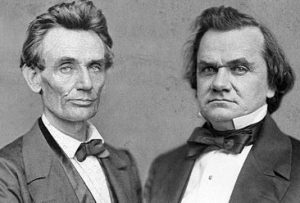 campaign against Stephen Douglas of Illinois for a United States Senate seat in 1858. The senatorial campaign featured a remarkable series of public encounters on the slavery issue, known as the Lincoln-Douglas debates, in which Lincoln argued against the spread of slavery, while Douglas maintained that each territory should have the right to decide whether it would become free or slave. Lincoln lost the Senate race, but his campaign brought national attention to the young Republican Party. In 1860, Lincoln won the party’s presidential nomination.
campaign against Stephen Douglas of Illinois for a United States Senate seat in 1858. The senatorial campaign featured a remarkable series of public encounters on the slavery issue, known as the Lincoln-Douglas debates, in which Lincoln argued against the spread of slavery, while Douglas maintained that each territory should have the right to decide whether it would become free or slave. Lincoln lost the Senate race, but his campaign brought national attention to the young Republican Party. In 1860, Lincoln won the party’s presidential nomination.
I find it very odd that today’s Democrats try to take credit for racial equality, when history proves that the opposite was true. When we look at the wars and the votes by the party numbers, it is easy to see that the Democratic party has long been the one trying to keep racial injustice going in this country. In fact, it was Lincoln’s anti-slavery views that caused the secession of seven southern states in protest, because they wanted to keep their slaves. Now, many people are wanting to tear down the statues that were erected to the heroes of the south…all Democrats, and it is the Democratic Party that is leading the fight. In my opinion, it is like tearing yourself apart from the inside. The Democratic Party, in an effort to appear to be the ones trying to obtain equal rights for all races, is, on the outside anyway trying to appear to agree, while on the inside, they are just trying to take eyes off of their own underhanded agenda. I don’t know how I feel about the removal of those statues, but I don’t like that the Republicans and Conservatives are being blamed for the initial placement of the statues.
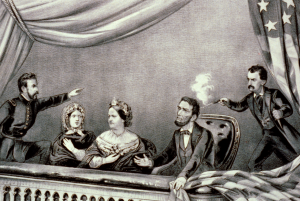
In 1863, as the tide turned against the Confederacy, Lincoln emancipated the slaves and in 1864 won reelection. In April 1865, he was assassinated by Confederate sympathizer John Wilkes Booth at Ford’s Theatre in Washington DC. The attack came only five days after the American Civil War effectively ended with the surrender of Confederate General Robert E. Lee at Appomattox. For preserving the Union and bringing an end to slavery, and for his unique character and powerful oratory, Lincoln is hailed as one of the greatest American presidents. And amazingly…at least to the Democrats, he was a Republican.
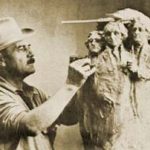
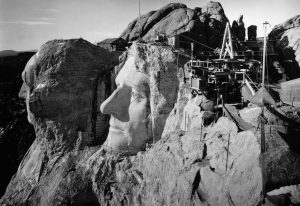 When a construction project begins, it usually takes a matter of a few months to complete. That is not how it works when carving a large sculpture, such as Mount Rushmore. Mount Rushmore National Memorial is a sculpture carved into the granite face of Mount Rushmore, a batholith in the Black Hills in Keystone, South Dakota, United States. It was the vision of Doane Robinson, who thought that carving the faces of famous people in the Granite of the Black Hills region, would bring tourists to the region. Robinson’s vision has proven to be an amazing success. His original idea was to put the sculpture in the area of the Needles, but the chosen sculptor, Gutzon Borglum rejected the idea because of the poor quality of the granite, and strong opposition from the Native American Groups in the area. I’m glad it didn’t go in the needles area, because they have a beauty all their own, and it would have been a shame to change them.
When a construction project begins, it usually takes a matter of a few months to complete. That is not how it works when carving a large sculpture, such as Mount Rushmore. Mount Rushmore National Memorial is a sculpture carved into the granite face of Mount Rushmore, a batholith in the Black Hills in Keystone, South Dakota, United States. It was the vision of Doane Robinson, who thought that carving the faces of famous people in the Granite of the Black Hills region, would bring tourists to the region. Robinson’s vision has proven to be an amazing success. His original idea was to put the sculpture in the area of the Needles, but the chosen sculptor, Gutzon Borglum rejected the idea because of the poor quality of the granite, and strong opposition from the Native American Groups in the area. I’m glad it didn’t go in the needles area, because they have a beauty all their own, and it would have been a shame to change them.
They settled on Mount Rushmore, which also has the advantage of facing southeast for maximum sun exposure, which makes the faces of our presidents stand out in an amazing way. Robinson wanted it to feature American West heroes like Lewis and Clark, Red Cloud, and Buffalo Bill Cody, but Borglum decided the sculpture should have broader appeal and chose the four presidents. Borglum created the sculpture’s design and oversaw the project’s execution from 1927 to 1941 with the help of his son, Lincoln Borglum. When I think of the years it too to complete the sculpture, I wonder if it was what was expected, or just the way it came down. Mount Rushmore features 60-foot sculptures of the heads of four United States presidents…George Washington (1732–1799), Thomas Jefferson (1743–1826), Theodore Roosevelt (1858–1919), and Abraham Lincoln (1809–1865). After securing federal funding through the enthusiastic sponsorship of “Mount Rushmore’s great political patron” US Senator Peter Norbeck, construction on the memorial began in 1927, and the presidents’ faces were completed between 1934 and 1939. Upon Gutzon Borglum’s death in March 1941, his son Lincoln Borglum took over as leader of the construction project. Each president was originally to be depicted from head to waist.
The memorial park covers 1,278.45 acres and is 5,725 feet above sea level, and while the sculpture work officially ended on October 31, 1941, due to lack of funding and the very real possibility of a United States entrance into World War II. Mount Rushmore has become an iconic symbol of the United States, and it has 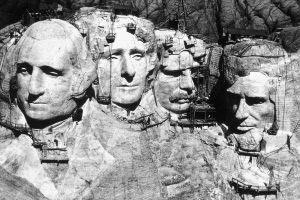
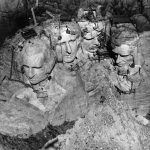 appeared in works of fiction, as well as being discussed or depicted in other popular works. It has also been featured a number of movies. It attracts over two million visitors annually. It’s amazing to me that what started out to be a tourist attraction, quickly became a must see place for every patriotic American. My husband and I love to go to the Black Hills, and with the close proximity to our Casper, Wyoming home, we take a week every summer to go and enjoy the beauty and patriotism that now resides there.
appeared in works of fiction, as well as being discussed or depicted in other popular works. It has also been featured a number of movies. It attracts over two million visitors annually. It’s amazing to me that what started out to be a tourist attraction, quickly became a must see place for every patriotic American. My husband and I love to go to the Black Hills, and with the close proximity to our Casper, Wyoming home, we take a week every summer to go and enjoy the beauty and patriotism that now resides there.
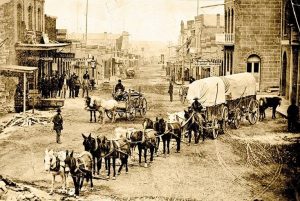 The discovery of gold in the United States triggered massive growth, with towns springing up across the area. Helena, Montana was one of those towns. On October 30, 1864, four miners struck it rich at their appropriately named mine, “Last Chance Gulch.” From that discovery came one of the wealthiest cities in the United States by the late nineteenth century…Helena, Montana. While it was once one of the wealthiest cities, the current population of Helena doesn’t really fall in line with the direction the city appeared to be taking in 1864. As of the 2010 census the population is 28,190, making it the fifth least populous state capital in the U.S after Montpelier, Vermont; Pierre, South Dakota; Augusta, Maine; and Frankfort, Kentucky.
The discovery of gold in the United States triggered massive growth, with towns springing up across the area. Helena, Montana was one of those towns. On October 30, 1864, four miners struck it rich at their appropriately named mine, “Last Chance Gulch.” From that discovery came one of the wealthiest cities in the United States by the late nineteenth century…Helena, Montana. While it was once one of the wealthiest cities, the current population of Helena doesn’t really fall in line with the direction the city appeared to be taking in 1864. As of the 2010 census the population is 28,190, making it the fifth least populous state capital in the U.S after Montpelier, Vermont; Pierre, South Dakota; Augusta, Maine; and Frankfort, Kentucky.
My husband, Bob Schulenberg’s aunt, Marion Kanta, and her family lived in Helena until the time for her passing in 1999, and many of her family members live there still. That said, we visited the capitol city a few times, and found it to be a very nice place. Of course, during the gold rush years, things might have been very 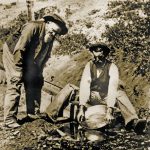 different. A gold rush town can have a tendency to be a high crime area, and when 3.6 billion dollars worth of gold is extracted in the city limits of a town over a twenty year period, you know that there were people who would like nothing more than to take over the claim of another person, no matter what it took. The first major Anglo settlement of Montana began in the summer of 1862, when prospectors found a sizeable deposit of placer gold at Grasshopper Creek to the west of what is today…Helena, Montana. When other even richer deposits were discovered nearby, a major rush began as tens of thousands of miners scoured the territory in search of gold. In 1864, four prospectors spotted signs of gold in the Helena area while on their way to the Kootenai country, but they were eager to reach the reportedly rich gold regions farther to the north and did not stop. Then, after striking out on the Kootenai, they decided to take “one last chance” on finding gold and returned. When the signs turned out to mark a rich deposit of placer gold, they staked their claims and named the new mining district Last Chance Gulch.
different. A gold rush town can have a tendency to be a high crime area, and when 3.6 billion dollars worth of gold is extracted in the city limits of a town over a twenty year period, you know that there were people who would like nothing more than to take over the claim of another person, no matter what it took. The first major Anglo settlement of Montana began in the summer of 1862, when prospectors found a sizeable deposit of placer gold at Grasshopper Creek to the west of what is today…Helena, Montana. When other even richer deposits were discovered nearby, a major rush began as tens of thousands of miners scoured the territory in search of gold. In 1864, four prospectors spotted signs of gold in the Helena area while on their way to the Kootenai country, but they were eager to reach the reportedly rich gold regions farther to the north and did not stop. Then, after striking out on the Kootenai, they decided to take “one last chance” on finding gold and returned. When the signs turned out to mark a rich deposit of placer gold, they staked their claims and named the new mining district Last Chance Gulch.
Last Chance Gulch would prove to be the second biggest placer gold deposit in Montana, producing some 19  million dollars worth of gold in just four years. Almost overnight, thousands of miners flooded into the region, and the four original miners added to their fortunes by establishing the town of Helena to provide the new miners with food, lodging, and supplies. But unlike many of the early Montana mining towns, Helena did not disappear once the gold gave out, which was inevitable. Helena was able to survive and grow by serving the wider Montana mining industry, because it was located on several major transportation routes, well supplied with agricultural products from an adjacent valley, and near to several other important mining towns. In 1875, the city became the capital of Montana Territory, and in 1894, the capital of the new state of Montana.
million dollars worth of gold in just four years. Almost overnight, thousands of miners flooded into the region, and the four original miners added to their fortunes by establishing the town of Helena to provide the new miners with food, lodging, and supplies. But unlike many of the early Montana mining towns, Helena did not disappear once the gold gave out, which was inevitable. Helena was able to survive and grow by serving the wider Montana mining industry, because it was located on several major transportation routes, well supplied with agricultural products from an adjacent valley, and near to several other important mining towns. In 1875, the city became the capital of Montana Territory, and in 1894, the capital of the new state of Montana.

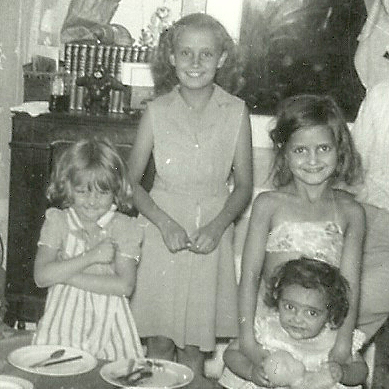 Over the past few years, my aunt, Sandy Pattan and I have found that we have some things in common…besides the fact that we are related. One of the most interesting things to me is a mutual love of the family history. All her life, Aunt Sandy has been listening. She listened to the stories her parents, aunts, and uncles told her about the family. She, like me, could picture it all in her head, as if she were standing there watching the whole thing. She could picture the Indian chiefs that her grandfather and her dad, not only knew, but were even respected by, in a time when the Indians and the White Man didn’t necessarily get along. It was a time that she and I could never relate to, were it not for the stories of her parents, my grandparents. And now…in their honor, Aunt Sandy is passing along the history she received from her parents, so that the family history will not fade away. I think that is the reason that she and I love the family history so much. It is like the blood that flows in our veins, a part of our DNA, it is our story, because we came from our ancestors, and their past experiences shaped their lives, and therefore, our lives too.
Over the past few years, my aunt, Sandy Pattan and I have found that we have some things in common…besides the fact that we are related. One of the most interesting things to me is a mutual love of the family history. All her life, Aunt Sandy has been listening. She listened to the stories her parents, aunts, and uncles told her about the family. She, like me, could picture it all in her head, as if she were standing there watching the whole thing. She could picture the Indian chiefs that her grandfather and her dad, not only knew, but were even respected by, in a time when the Indians and the White Man didn’t necessarily get along. It was a time that she and I could never relate to, were it not for the stories of her parents, my grandparents. And now…in their honor, Aunt Sandy is passing along the history she received from her parents, so that the family history will not fade away. I think that is the reason that she and I love the family history so much. It is like the blood that flows in our veins, a part of our DNA, it is our story, because we came from our ancestors, and their past experiences shaped their lives, and therefore, our lives too.
Aunt Sandy is a loving, caring person. She is quick to do nice things for others, like taking her sister, my Aunt Virginia Beadle to brunch after church on Sundays; or picking my mom, Collene Spencer up, when she was still alive, to go to get togethers with their siblings. Being the youngest of nine children, Aunt Sandy is still able to drive, while some of the siblings aren’t…or weren’t. Of the original nine siblings, only five remain. That is a fact that weighs heavily on Aunt Sandy, and the remaining siblings. I suppose that is partly why she tries to spend as much time as she can with those who remain, and I understand that train of thought. She doesn’t want to waste the time she has left with her siblings. That shows a great degree of not only wisdom, but a deep love for her siblings.
Aunt Sandy is a deep, logical thinker too. I think that is one of many reason that we connect so well. I love our 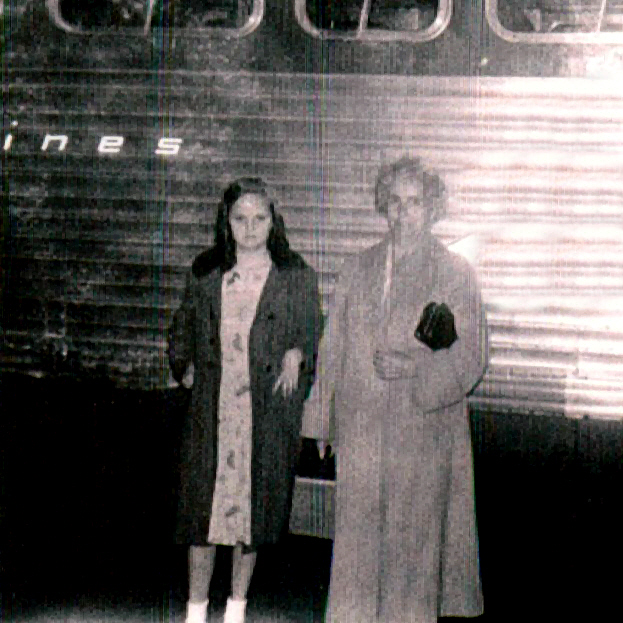
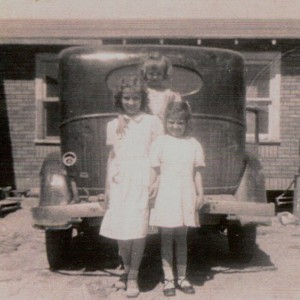 conversations, whether they are about family, politics, or just general interest, because she has amazing insight to so many issues, as well as a great sense of humor. Of course, being the humble person she is, Aunt Sandy would most likely disagree with me when it comes to her amazing mind, but as I have said before, “I call ’em as I see ’em.” Aunt Sandy has a wide range of interests, as do I, and that is part of what makes or conversations so interesting. I feel very blessed to have Aunt Sandy in my life. Today is Aunt Sandy’s birthday. Happy birthday Aunt Sandy!! Have a great day!! We love you!!
conversations, whether they are about family, politics, or just general interest, because she has amazing insight to so many issues, as well as a great sense of humor. Of course, being the humble person she is, Aunt Sandy would most likely disagree with me when it comes to her amazing mind, but as I have said before, “I call ’em as I see ’em.” Aunt Sandy has a wide range of interests, as do I, and that is part of what makes or conversations so interesting. I feel very blessed to have Aunt Sandy in my life. Today is Aunt Sandy’s birthday. Happy birthday Aunt Sandy!! Have a great day!! We love you!!

